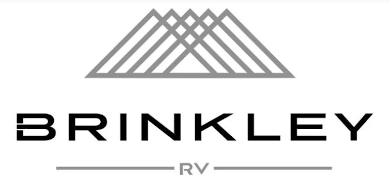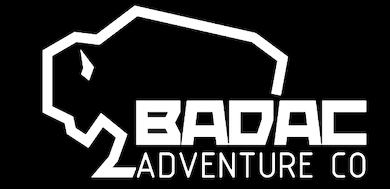Transforming the Single-Axle Overland & More
Ember RV creates customizable floorplans with its EmberTrack system, popular in its Overland Series.
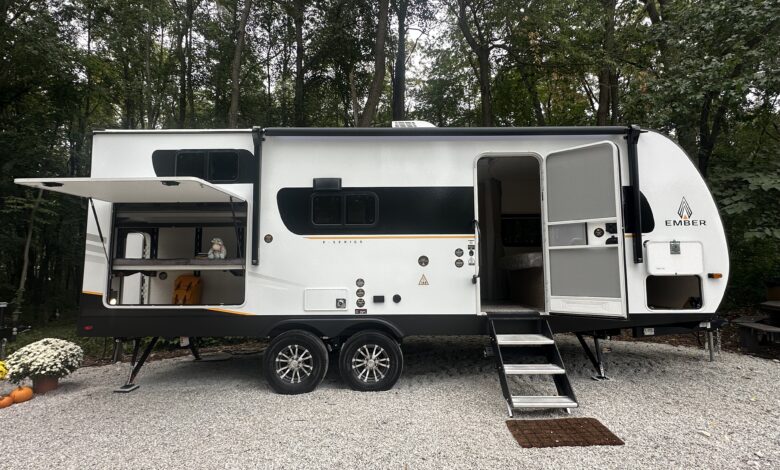
When Chris Barth joined forces with Ashley Bontrager Lehman, Steve Delagrange and Ernie Miller to build the foundation for a better RV company, the first step for Ember Recreational Vehicles was to create a product that would take their goals to “another universe.” Enter the single-axle Overland.
“We wanted to address the new buyers out there who are camping in a more nontraditional and unconventional way. They don’t want to be around other people as much. They’re experiencing wanderlust. They’re camping in more rustic spaces and off-grid. So, we’re focusing on solar and off-grid capabilities,” says Barth, Ember co-founder, vice president and chief operating officer. “I was very interested in the overland space, which was a growing interest in the U.S. People want the great American road trip with more of an emphasis on the journey than the destination. It’s not just about being there anymore.”
Off-roading and overlanding are growing in popularity and emerging in part because of Jeep culture. People are integrating more of their outdoor lifestyle into their everyday life.
“The outdoor industry is huge in the U.S. We assessed that and thought, what if our new post-pandemic customer says, ‘I don’t want a campground. I want to be able to go wherever I want, however I want, and no one is taking my vacation away,’” Barth says.
In creating their Overland Series, Ember looked at the Australian RV market, where almost all caravans are built for off-roading. Barth says they specifically looked at their suspension systems and then partnered with CURT to create a brand-new independent suspension system, laying the foundation for the Overland Series.
A Focus on Optimum Quality
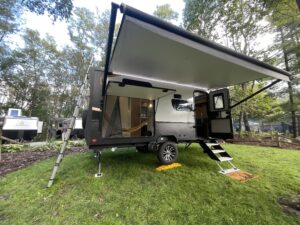 Ember began by creating a smaller, single-axle RV based on the idea that they wanted to build a higher quality coach.
Ember began by creating a smaller, single-axle RV based on the idea that they wanted to build a higher quality coach.
“We focus on designing and building quality into our RVs, not inspecting quality in. Better, higher quality materials and smarter, more intentional designs at the front end mean less failed inspections and post-production issues,” Barth says. “This is a space not currently catered to by traditional RV manufacturers.”
The Overland Series RV doesn’t have a typical axle going all the way across. The independent suspension has heavy-duty coil springs with dual shock absorbers on each wheel and allows for better ground clearance.
“It’s just not something that’s typical in the conventional RV space,” he says. “We launched this new type of suspension with CURT and used up all their production of that in the initial run. Multiple other manufacturers are now looking at and using the new system. It really makes for a unique ride and something that’s very different than what is typically done in single axles. With this system we gain an additional 6 to 8 inches and the suspension absorbs the noise, not your trailer, so there’s not as much feedback in the tow vehicle.”
Barth says they began showing their Overland product at shows in January 2021 and the feedback has been overwhelmingly positive since then.
“The first models were all single axle and then tandem axle came in the summertime. Single axle is what we have most of out in the marketplace,” he says. “We’ve been asked to build bigger and different models since then. We’ve really had fantastic feedback from customers about their wants and needs.”
A Transformer for All Customer Types
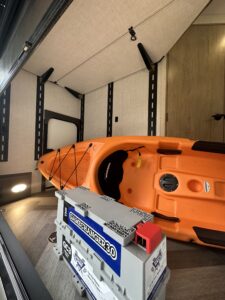
In response to customer feedback, Barth says they developed a modularized design on their floorplans: EmberTrack (patent pending). The EmberTrack allows the owner to completely reconfigure areas of their RV depending on how they want to use it.
“We have 10 different floorplans in the Overland Series. We are matching up with very specific sets of customers. We see a whole lot of hybrid use now in our space. Maybe grandparents buy our coaches with a back end that’s totally reconfigurable. One trip it’s just them and they have gear in there. Next weekend, next trip, they’re bringing the grandkids so they reconfigure that storage space to turn it into a bunkroom.”
EmberTrack allows for traditional bunk beds at one point, then expandable, reconfigurable panels allow it to become a storage space for kayaks and bikes or it can become a desk area or shelving at different heights. The camper can be many different floorplans at once.
Barth says they have at least 2,000 customers using Ember RVs currently, and that number is still growing.
“The EmberTrack system has been a huge, huge deal. We’re also known for using composite materials. The floor, sidewalls and rooftop are made of composite materials. We’re not using wood on that outer structure. We use a specialty flooring material and use Azdel, a composite panel, on the inner and outer wall, which protects the coach from rot, mold or mildew and makes them lighter weight.”
Barth says they build their coaches using European windows imported from the Netherlands. They’re dual-pane acrylic and have an integrated shade and screen that open super wide. Barth says the windows are more thermally insulated and better than a dual-pane glass window.
“It makes them aesthetically pleasing, but it also makes them more 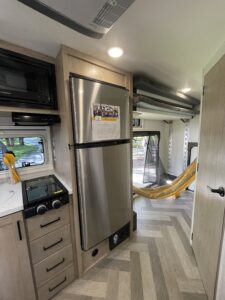 expensive. But that’s what makes the difference in quality. Some things we’re known for are a little bit different,” Barth says. “We are the first users of the specialty wheel lock, TreadLock (also patent pending). TreadLock can lock down the wheel so it doesn’t move backward or forward similar to a wheel chock. Then we isolate the side-to-side movements by using specialty QuickDrop stabilizers on all four corners.”
expensive. But that’s what makes the difference in quality. Some things we’re known for are a little bit different,” Barth says. “We are the first users of the specialty wheel lock, TreadLock (also patent pending). TreadLock can lock down the wheel so it doesn’t move backward or forward similar to a wheel chock. Then we isolate the side-to-side movements by using specialty QuickDrop stabilizers on all four corners.”
The MSRP for the Overland Series RVs are between $50,000 and $67,000.
Barth says some holdups people may have about purchasing a single-axle unit is that they worry about extra sway and weight distribution, and suspension setup or tire wear. Barth says there are effective aftermarket ways to combat sway control with weight-distribution hitches and sway bars. Ember addressed the fear of suspension and tire wear by building an upgraded suspension and upgraded tires with a standard tire pressure monitoring system (TPMS).
“We use Goodyear Wrangler Tires you would find on a truck. These are brand-name, off-road tires. So those concerns people have, we’ve already answered those,” Barth says. “When you tow one of our coaches, you see that they handle differently. Our delivery drivers will say, ‘Whoa! This is really different. Like driving on a cloud.’ Trailers they’ve hauled in the past have different ride attributes.”
The Future of the Ember Universe
Ember has over 100 dealership locations across North America. Barth says it’s a blend of big, regional and smaller mom-and-pop shops.
“We love to have that blend. We make sure we have dealers known for their service that have many service bays available. We’re still expanding further into Canada and around the country. Initially, we didn’t want to expand too quickly, and we wanted to hit major markets, so we tried to find the right dealership partners,” he says.
Rather than a Customer Service department, Barth says Ember has an Ownership Experience team.
“The goal was to make it so we have support for dealers before, during and after the sale. There is usually sales support, marketing support and lots of before-sale talk, but then some manufacturers don’t carry it through after. We have tools where dealers and customers can work with us and support them really well through the Ownership Experience group,” he says.
Ember RV offers the 123 Warranty, because getting warranty help with Ember is “Easy as 1-2-3,” Barth says. During the first year of ownership, an owner can do a one-time transfer of the warranty. The two stands for the two-year limited warranty, and the three stands for a three-year limited structural warranty to support the build of each Ember unit.
“After we debuted the Overland series in 2021, we looked at more discussions about where we were heading and the clientele we tried to serve in the Overland Series. We were like, ‘This is our hiking boot. What if we wanted to build a really fantastic running shoe. An over-the-road experience and a beautiful, luxury experience,’” Barth says.
Ember RV’s Touring edition debuted in the fall of 2022. Then, in the fall of 2023, the company debuted the E-Series. Barth says the E-Series was in response to customers who loved what Ember did, loved off-grid and also loved the Touring, but asked for something in a little bit more affordable price point. The “E” in E-Series stands for “Essential.”
“We want to offer something at all different price points and in all types of use cases,” Barth says.
That means that Ember is already looking to the next product.
“People began asking about a toy hauler. We asked, ‘Well, what are you going to bring along?’ The most common response was active-type lifestyle equipment like mountain bikes, kayaks – enough for the whole family – or even grill equipment. It’s not just motorcycles or side by sides,” Barth says. “We decided to create a gear hauler. A gear hauler is like having a garage. Featuring the EmberTrack system throughout the interior allows the space to be convertible from sleeping space to cargo and equipment storage. Putting a ramp on the back was logical to easily load and unload. I’m a huge fan of modular design because of the expandability and flexibility we can give our customers.”
With this all in mind, next up for Ember RV is the 240TKR, which features a twin bed setup in the front that can be converted to a king bed.
“Traditional, luxury and adventure trailers are the three segments we’re in right now. Where we are headed for the future is designing more floorplans and products so our customers can have great flexibility and get more bang for their buck. We’re trying to make sure we’re building these three lines of travel trailers really, really well.”
Ember may have been born out of the pandemic, but it is also the culmination of years of industry knowledge coming together to create a different type of RV.
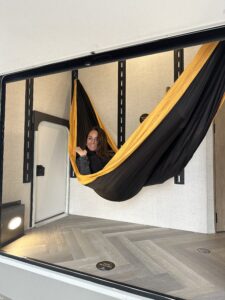
“Our team worked together previously,” Barth says about Ashley Bontrager Lehman, Ember founder, president and CEO, and also Ernie Miller and Steve Delagrange. “We watched the pandemic make customers, dealers, and manufacturers do unexpected things. The customer base changed significantly, and their needs evolved. People began using RVs in different spaces and in different ways.
“We all bonded around the idea of wanting to build a better RV in response to how we had seen RVs previously built. Sometimes the way an RV is built is guided by what’s best for the customer, but more frequently by how inexpensively it can be produced Barth says. “We decided we could use better materials and do a better design. All our talks about how to build a better RV shifted into how to build a better RV company. We wanted to make sure we were putting the right people in the right seats to make sure the culture is correct and that we have the right vision, mission and philosophy.”
